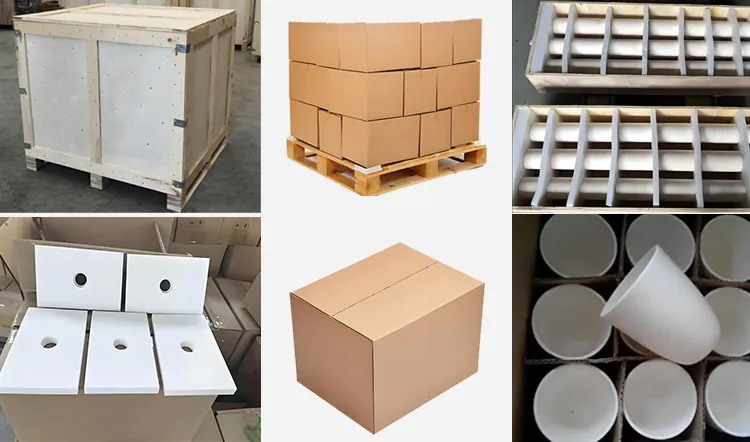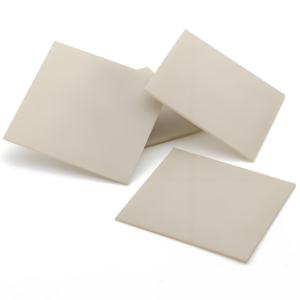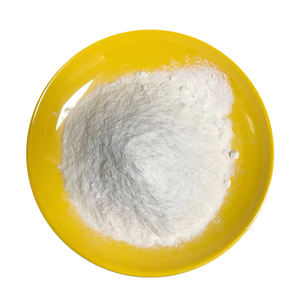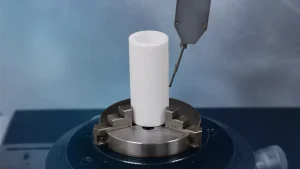Professional industry ceramic supplier, silicon nitride, silicon carbide, aluminum nitride and any other kinds of ceramics.
1. Introduction
Just 24 hours ago, a major materials science breakthrough was announced by researchers at the Fraunhofer Institute: a new sintering technique that enhances the thermal shock resistance of silicon carbide crucibles by over 30%. This development underscores the growing demand for high-performance refractory materials in industries ranging from semiconductor manufacturing to aerospace. As global supply chains prioritize efficiency and durability, the silicon carbide crucible has emerged as a cornerstone of advanced thermal processing.

Silicon carbide crucibles are not just another lab accessory—they’re engineered components built to withstand extreme conditions where most ceramics would fail. In this article, we’ll dissect what makes them unique, compare them to alternatives like zirconia and alumina crucibles, and even explore how the same material is finding unexpected uses in kitchenware like silicon carbide ceramic baking dishes and dinner plates.
2. Understanding Silicon Carbide Crucibles
2.1. What Is a Silicon Carbide Crucible?
A silicon carbide crucible is a container made from silicon carbide (SiC), an advanced ceramic known for its exceptional hardness, thermal conductivity, and resistance to thermal shock and chemical corrosion. Unlike traditional clay or graphite crucibles, SiC crucibles maintain structural integrity at temperatures exceeding 1,600°C (2,912°F), making them ideal for melting non-ferrous metals like aluminum, copper, and zinc.
2.2. Manufacturing Methods: Reaction-Bonded vs. Sintered
There are two primary methods for producing silicon carbide crucibles: reaction-bonded silicon carbide (RBSiC) and sintered silicon carbide (SSiC). RBSiC crucibles, such as those used in rbsic silicon carbide tile blocks or ceramic columns, are made by infiltrating porous carbon preforms with molten silicon. This yields a dense, strong structure with excellent thermal shock resistance but slightly lower purity.

In contrast, sintered SiC crucibles are formed under high pressure and temperature without binders, resulting in higher purity and better corrosion resistance—critical for applications in semiconductor or laboratory settings. However, they are more expensive and brittle.
3. Silicon Carbide vs. Other Crucible Materials
3.1. Silicon Carbide vs. Alumina (Al2O3) Crucibles
Alumina crucibles (al2o3 crucible) are widely used due to their chemical inertness and affordability. However, they suffer from lower thermal conductivity and are prone to cracking under rapid temperature changes. Silicon carbide outperforms alumina in thermal shock resistance and heat transfer, making it preferable for continuous casting or high-cycle melting operations.
3.2. Silicon Carbide vs. Zirconia Crucibles
Zirconia crucibles (zirconia crucible or zro2-based) offer superior resistance to acidic slags and are used in specialty glass and rare-earth metal processing. Yet, zirconia is more expensive, has lower thermal conductivity, and can undergo phase transitions that cause microcracking. For most industrial metal melting, silicon carbide provides a better balance of cost, durability, and performance.

3.3. Boron Carbide vs. Silicon Carbide: A Material Showdown
While boron carbide (b4c ceramic) is harder and used in armor and abrasives, it’s less thermally stable than silicon carbide and far more costly. The comparison ‘boron carbide vs silicon carbide’ often comes down to application: boron carbide for wear resistance, silicon carbide for thermal management. Crucibles almost always favor SiC due to its thermal properties and manufacturability.
4. Beyond Crucibles: The Expanding Universe of Silicon Carbide Ceramics
Silicon carbide’s utility extends far beyond crucibles. Its high thermal conductivity and durability have led to innovations like silicon carbide burner nozzles, silicon carbide brick for kiln linings, and even silicon carbide ceramic tubes for furnace insulation. In plumbing, silicon carbide ceramic disc taps and silicon carbide ceramic disk for tap mechanisms offer unmatched wear resistance.
Surprisingly, consumer markets are embracing this industrial material. Products like silicon carbide ceramic baking dish, silicon carbide ceramic dinner plates, and silicon carbide ceramic serving bowls are gaining traction for their oven-to-table versatility, scratch resistance, and sleek aesthetic—available in finishes from silicon carbide black ceramic plates to silicon carbide white ceramic plates.
5. Silicon Carbide vs. Silicon Nitride: A Crucible Rivalry?
Silicon nitride (si3n4) is another advanced ceramic with high strength and thermal shock resistance. Some manufacturers now offer silicon nitride crucible factory options, especially for applications requiring extreme mechanical reliability. However, silicon nitride is generally more expensive and less thermally conductive than SiC.
Specialized components like silicon nitride ring, custom silicon nitride heat shield, and silicon nitride plate serve niche roles in aerospace and electronics, but for bulk melting and foundry work, silicon carbide remains dominant. The high purity silicon nitride powder market is growing, yet it hasn’t displaced SiC in mainstream crucible use.
6. Practical Considerations and Future Outlook
When selecting a silicon carbide crucible, users must consider factors like porosity, binder type, and intended atmosphere (oxidizing vs. reducing). RBSiC variants are often preferred for foundry use due to cost-effectiveness, while sintered SiC suits high-purity lab environments.
With innovations like porous silicon carbide ceramic tubes for filtration and silicon carbide mullite tube hybrids for enhanced stability, the material continues to evolve. Meanwhile, everyday items—from silicon carbide ceramic ramekins to silicon carbide ceramic casserole dish with lid—demonstrate how advanced ceramics are bridging industrial and domestic worlds.
7. Conclusion
Silicon carbide crucibles stand out not just for their ability to endure extreme heat, but for their versatility across industries. Whether you’re melting aluminum in a foundry or baking a casserole in a silicon carbide ceramic oven dish, the same material principles apply: durability, thermal efficiency, and resilience. As manufacturing techniques improve and costs stabilize, expect silicon carbide—and its ceramic cousins like silicon nitride—to play an even larger role in both heavy industry and high-end consumer goods.
Our Website founded on October 17, 2012, is a high-tech enterprise committed to the research and development, production, processing, sales and technical services of ceramic relative materials such as What. Our products includes but not limited to Boron Carbide Ceramic Products, Boron Nitride Ceramic Products, Silicon Carbide Ceramic Products, Silicon Nitride Ceramic Products, Zirconium Dioxide Ceramic Products, etc. If you are interested, please feel free to contact us.


